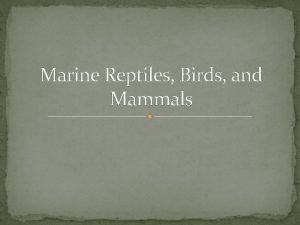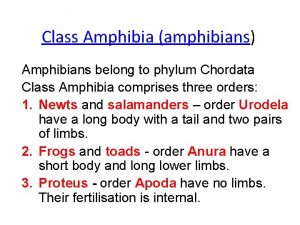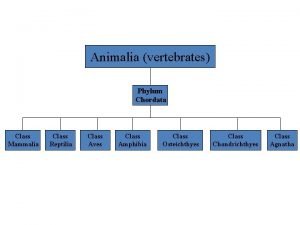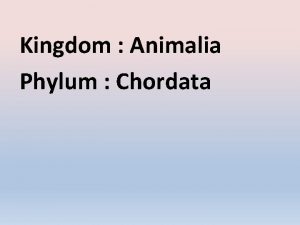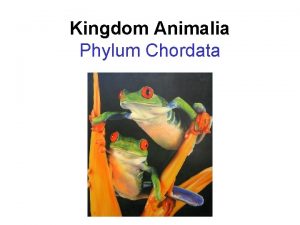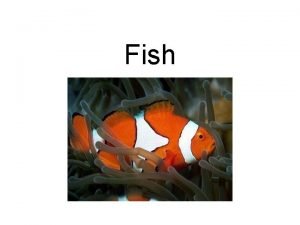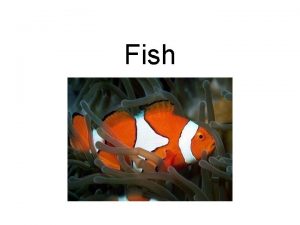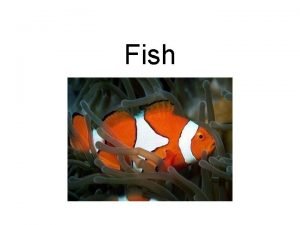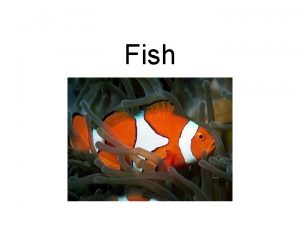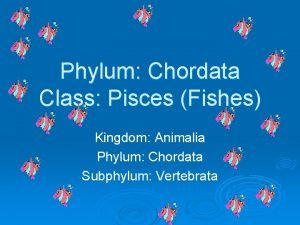Whales Taxonomic Classification Kingdom Animalia Phylum Chordata Class










- Slides: 10

Whales

Taxonomic Classification Kingdom: Animalia Phylum: Chordata Class: Mammalia Order: Cetacea Suborder: Mysticeti & Odonticeti

Scientific Name Megaptera novaeangliae, humpback Physeter macrocephalus, sperm Orcinus orca, killer

KEY CHARACTERISTICS - MYSTICETI Baleen whales are characterized by having baleen plates for filtering food from water, rather than having teeth. This distinguishes them from the other suborder of cetaceans, the toothed whales or Odontoceti. Living species of Mysticeti have teeth only during the embryonal phase. Fossil Mysticeti had teeth before baleen evolved.

The Odonticeti (toothed whales) form a suborder of the cetaceans, including sperm whales, beaked whales, dolphins, and others. As the name suggests, the suborder is characterized by the presence of teeth rather than the baleen of other whales.

Adaptations Whales swim with their tails, which is necessary since mammals have spines that flex up and down, rather than side to side. The blowhole is also an adaptation to living in the sea, as is the thick layer of blubber that insulates them. Unlike fish, which does not maintain a body temperature higher than the environment, whales generate heat metabolically and they need a thick layer of fat to insulated themselves. Another adaptation is their size, which allows them to escape predation.

Habitat needs Whales live only in water, and tend to stay where it is warmer. This is why you will find them along the coasts during the winter months. They migrate to other regions so they can keep their body temperatures high enough. Along with having good body temperature whales also need their habitat to contain many small organisms such as krill for the m to eat and stay alive. Also whales need to be able to live relatively open parts of the ocean since they are so large and need to go up to the surface to breath every so often.

Physiology and Reproduction Whales are mammals and therefore produce sexually with sperm and egg. Whales reproduce based on their migration patterns. Most whales mate during the winter. Many male whales find a female mate by using sound to attract them.

• The Blue Whale is the largest known mammal that has ever lived, with a length of up to 105 ft long and weight of 150 tons. That’s the weight equivalent of 150 small cars! • Male whales are called bulls, and females are called cows. Their young are called calves. • Female baleen whales are larger than males. • Humpback whales only eat in summer, feeding off their fat reserves during the winter. • Orcas, also known as Killer Whales, are some of the top predators in the marine world. They feed mostly on fish, but some hunt seals, sea lions, and walruses. • Some cultures see whales as divine beings, such as in some places in Ghana and the Vietnamese, who occasionally hold funerals for beached whales. • Pilot Whales and Killer Whales may have the word “whale” in their name, but for classification purposes, they are actually considered dolphins.

Bibliography • https: //en. wikipedia. org/wiki/Whale • http: //www. enchantedlearning. com/subjects/ whales/ • http: //www. ansci. wisc. edu/jjp 1/ansci_repro/ misc/websites 09/wed/marine_mammals/mari nemammals 434. html • http: //www. alphawhalewatch. com/whales/10 -fun-whale-facts/
 Entertoxemia
Entertoxemia What are chordates
What are chordates Kingdom animalia phylum chordata
Kingdom animalia phylum chordata Kingdom: animalia phylum: arthropoda class: insecta
Kingdom: animalia phylum: arthropoda class: insecta Why are sperm whales called sperm whales
Why are sperm whales called sperm whales Animal kingdom phylum chordata
Animal kingdom phylum chordata Kingdom animalia phylum arthropoda
Kingdom animalia phylum arthropoda Cnidaria digestive tract
Cnidaria digestive tract Cnidaria characteristics
Cnidaria characteristics Phylum chordata class amphibia
Phylum chordata class amphibia Phylum chordata class reptilia
Phylum chordata class reptilia




